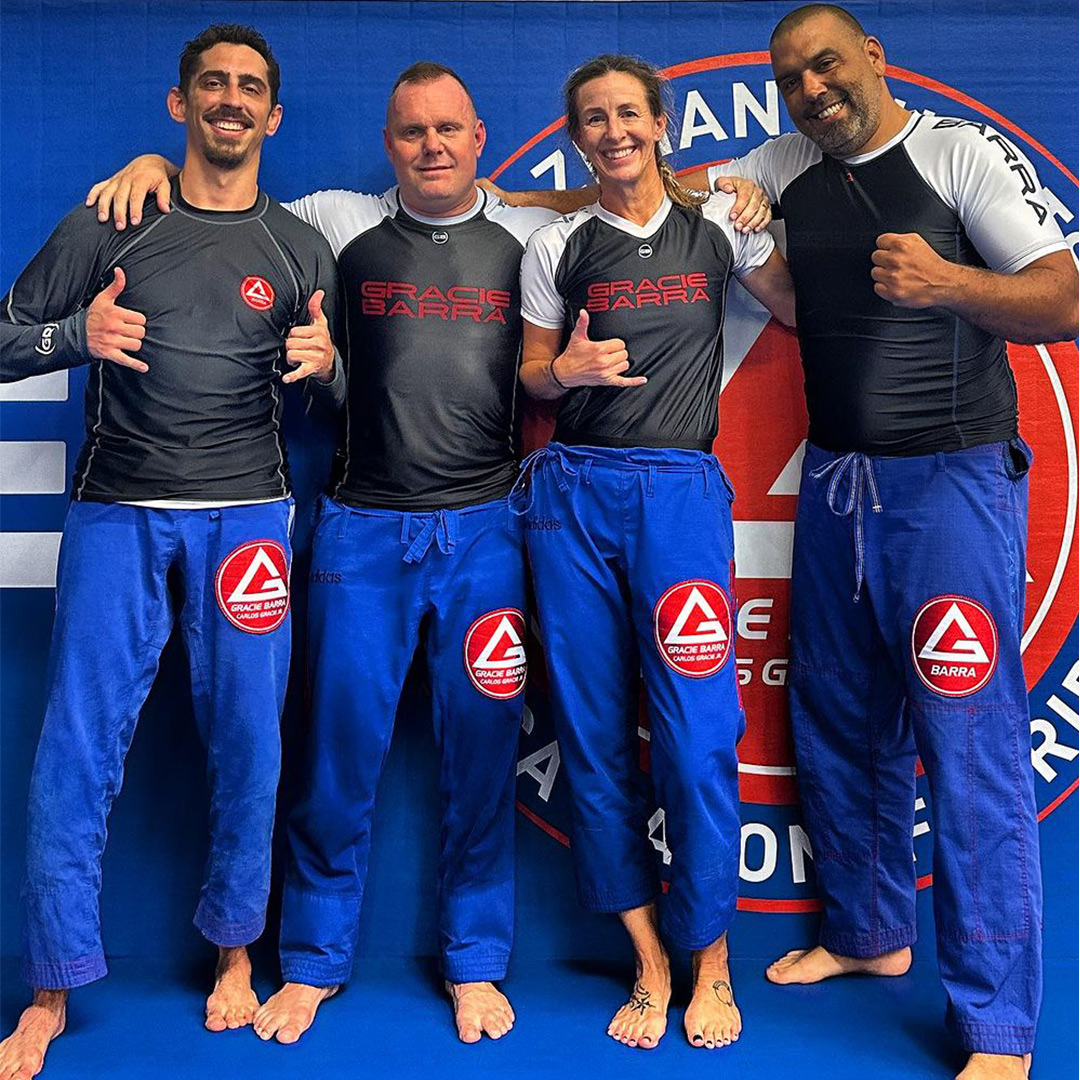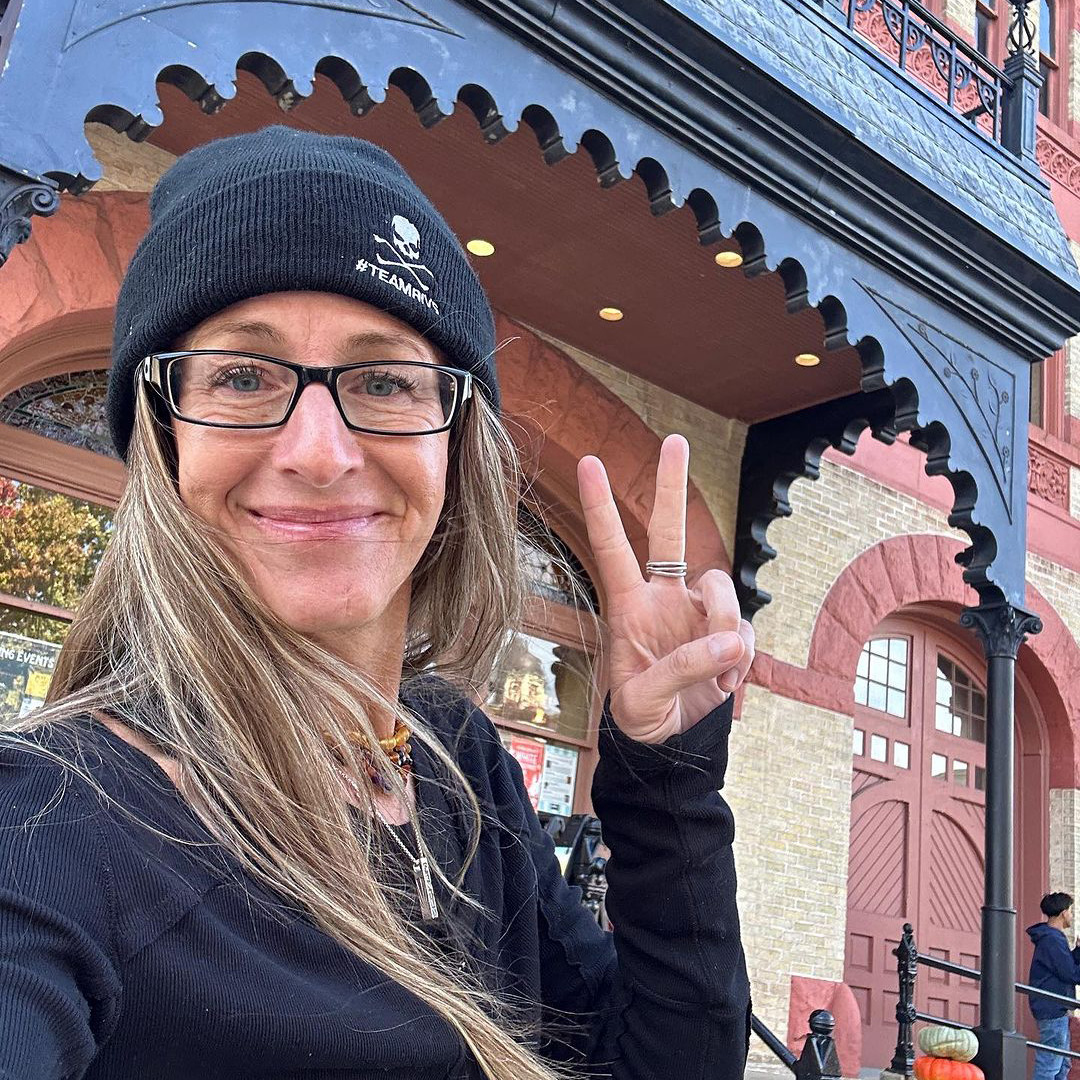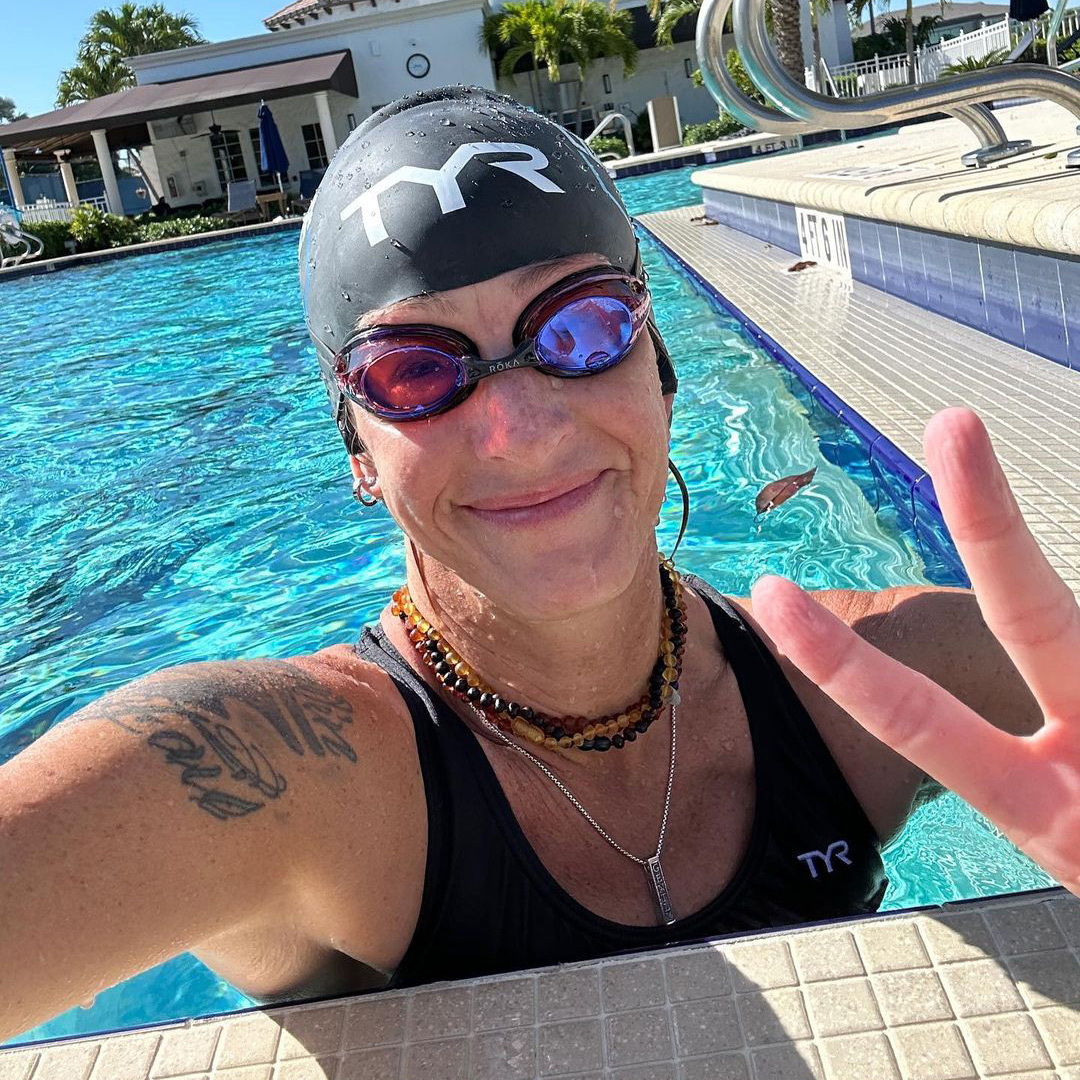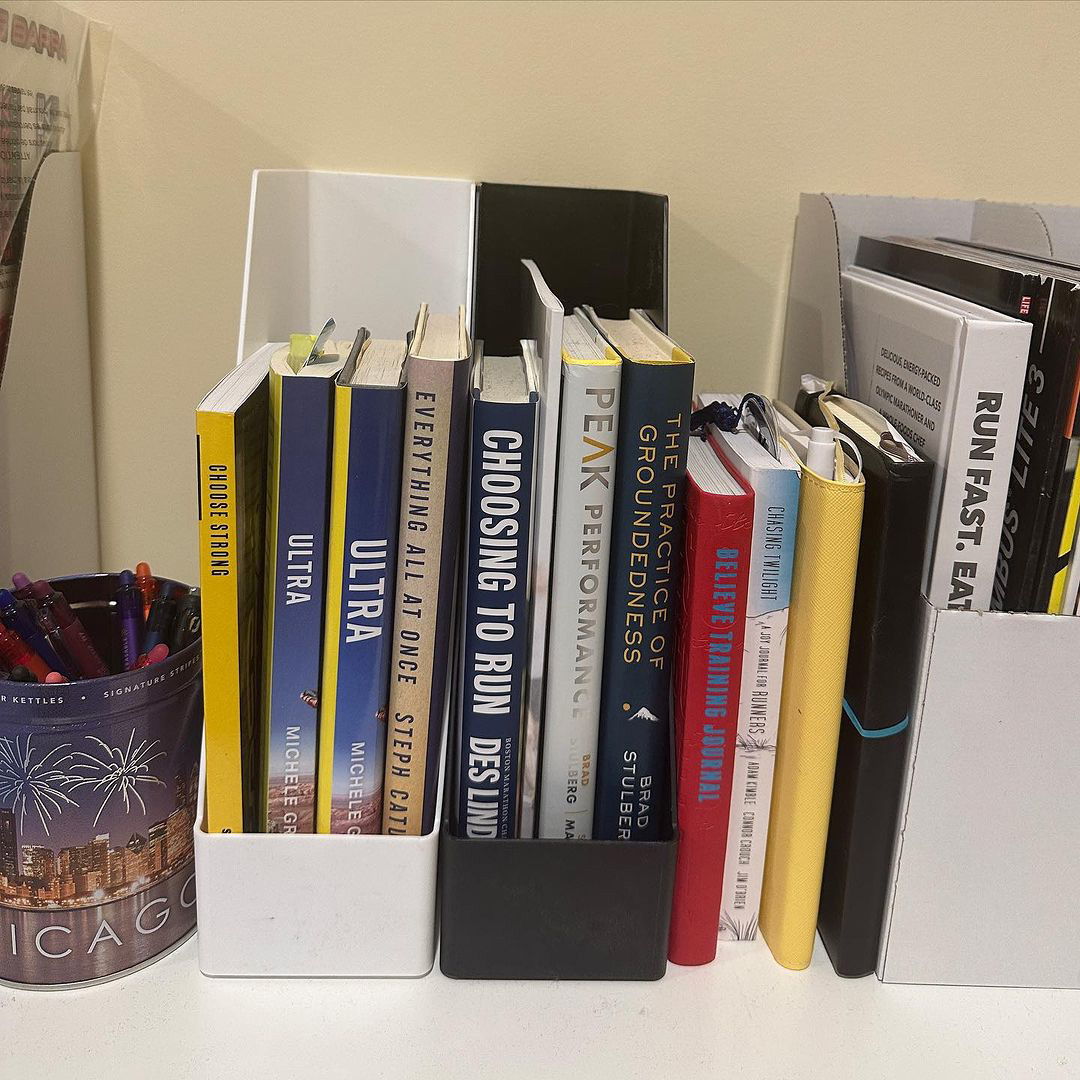In the world of running, the path to success is frequently met with the challenge of injuries — a journey familiar to every committed runner. Team Injinji Athlete Karin Bachrodt is an ultramarathon runner and coach who has been navigating running injuries for many years. Numerous doctors and physical therapists couldn’t determine the root cause of her injuries, but she stayed persistent. Now, with proper diagnoses, unique forms of cross-training, and a deep dedication to the sport, Karin is on the road to recovery.




Please share a little about yourself and your history with running.
My name is Karin, but in many circles, I'm known as Happy Mama. You will rarely see me without double braids and a visor! I'm 49 years old, a mom of two, ages ten & seven, and I live in South Florida. I am a run coach and studying to become a Certified Sports Nutritionist. In my spare time, I also train in Brazilian jiu-jitsu. I am a lifelong runner, starting at around twelve years old when I needed a way to get to and from swim practice. I started my training in triathlon at age fourteen, competing nationally at age sixteen. I was on the high school cross country/track teams and swam in the summers. I ran recreationally in college and continued through adulthood.
In 1996, my senior year of college, I ran my first marathon. In 2005, I lost a dear friend to leukemia. I started "Joggin' for Jenn" and over the next 4 years, raised $10,000 for the Leukemia & Lymphoma Society by running full/half marathons. After a brief hiatus to start and raise a family, I got back to running.
Many runners have gone through an injury cycle at least once in their life. What has your experience with injury been?
In my first full marathon in 1996, I trashed my knee at mile nineteen when I stepped sideways on a curb. Over the next 10 years I had eight knee surgeries from deteriorating and constantly shredding menisci. In 2006, I had my ninth knee surgery and I thought my running days were over. Alas, over time with careful recovery and proper time off to rehab, I was able to get back to running occasionally. My orthopedic surgeon cleared me to run as tolerated.
I remained relatively injury free until 2020 when I ended up with a grade three tibial stress fracture after a fundraising effort that resulted in about 130 miles over nine days—all on the punishing pavement. I took recovery and rehab seriously, but while I didn't realize it at the time, this was the beginning of one of the longest, most annoying injury cycles I've ever been in.
In early 2021, I was back to structured training, with four races set for the year. This was to be the year of the ultra—25km, 50km, 50 miles, 100km. My training was ramping up, and I was spending a lot of time on my feet while also trying to mix in cycling, swimming, strength, and mobility to help keep the risk of injury low.
By April, something felt off in the back of my leg—and while it didn't feel injured, it felt wrong and my massage therapist suspected it was my piriformis muscle. Fast forward nearly a year later, it was finally diagnosed as a grade two hamstring tear. After a lot of physical therapy, platelet rich plasma therapy (PRP), a new strength coach for mobility and prehab work, and I was back on track.
During this time, my foot started to bother me. In true runner fashion, I ignored it, chalked it up to overuse, and wrote it off until it got worse. My doctor referred me to an orthopedic podiatrist and a foot/ankle surgeon who spent a year trying to properly diagnose the injury, while simultaneously working through every conservative treatment option. After at least four MRIs, four x-rays, three cortisone shots, three aspirations, a PRP, physical therapy, and a reduction in training volume, we decided to operate in March 2023. There is still no clear diagnosis. The injury acted like a fracture some days, but none were seen on any imaging. Other days the symptoms pointed to sesamoiditis (inflammation of the sesamoid bones). Bunions and gout were ruled out. We talked about fusing the joint but decided to try a more conservative approach first by removing some errant bone fragments, and reducing a bone spur while realigning the joint without hardware. The hope was that this could hold me over for a long while, knowing I would likely need another more invasive surgery in the distant future.
It is now November 2023, eight months post-op and I am back to running five to six days a week. My range of motion is still nowhere near where it was, and I'm not sure if it will ever get back to pre-surgery range, but I'm working on it every day. I'm not entirely pain free, but I'm also not at the level of pain I was before. I'll take any improvement I can get!




How has injury affected your overall approach to training and staying active?
One of the first things injury taught me is to listen to my body. I've always been one of those "know better but don't do better" types of people. As I got older, and especially once I had kids, I started paying closer attention to how I treated my body, and more importantly, how my kids SAW me treating my body. With each injury, or phase of longer injury cycles, I've had to actively tell myself to listen to my doctors/care providers, and to DO what they say. They are the experts.
My approach to training and return to play post-injury has been very different from the past. I haven't rushed back into activity, even when I felt like I could. I did exactly as prescribed to set a good example for my kids. I needed to start being a little more mindful of the big picture. Do I want to run TOMORROW? Sure. But now I would rather be patient and have a much better chance of running long term, rather than risk another injury for short term gain. As Bruce Lee said, "Patience is not passive. On the contrary, it is concentrated strength."
How did you get involved with Brazilian jiu-jitsu during your recovery, and how often do you practice?
During the pandemic, my kids expressed an interest in learning a martial art. I started doing research and found Brazilian Jiujitsu. We visited the local academy and within minutes we were hooked. I loved what I saw and decided to try a class myself. I was sold. I run alone 99% of the time, and most of the time very early in the morning when it's dark. The self-defense training alone made it worthwhile. I also found that I was really enjoying learning a new skill, training for a very different type of sport, and the cross-training benefits were amazing. My foot was a mess, so I wasn't able to run much, and I found I could accomplish a lot at jiujitsu, even if a lot had to be modified. The best part? I have found the most incredible community and a very solid group of amazing friends. It is literally like my home away from home.
Swimming is known for its low-impact benefits. Can you share any experiences or insights you’ve gained from incorporating swimming into your routine while recovering from injury?
The low-impact benefits are so great. Aside from taking the load off of your body and experiencing the cardiovascular benefits without the constant pounding of running, swimming allows you to use muscles that you don't typically use while running. It's a great way to build your overall endurance, without the wear and tear. Using your muscles differently or using different muscle groups altogether, allows you to even out muscle imbalances. You get a full body workout! The other thing about swimming is that while it is great for building your aerobic capacity, it's also a great way to build strength through resistance training. Water is far denser than air, so the constant push and pull against the water provides the added benefit of strengthening muscles, especially in your legs if you use a kickboard.




Do you recommend any books, movies, tv shows or podcasts for keeping your spirits high during periods of less physical activity?
Books
- Without question, my top recommendation is Ultra by Michele Graglia. I've read or listened to this no fewer than seventeen times.
- Choose Strong by Sally McRae - This is not a running book, but it is written by one of the most inspiring and accomplished mountain runners. Couldn't recommend this more for a great perspective on life.
- 80/20 Running by Matt Fitzgerald - This is less about keeping spirits high and more about a darn good philosophy to follow. This is how I am coached and how I coach others.
Podcasts
- Choose Strong by Sally McRae - AKA "The Sally and Eddie Show". If you're looking for motivation, inspiration, education, and a whole lot of fun, you will not be disappointed.
- The Rich Roll Podcast - if you're in the running or endurance world, it's likely you already know about this one, but if not, have a listen. He's one of a select few who can put out two hour episodes and make every single second worth it.
- Running for Real by Tina Muir - I love Tina's quest to help us all live a more sustainable life and make the world a better place. She also has "Together Run" episodes during which she runs, and you run "with her". They are amazing.
As you return to consistent training, do you foresee your alternative activities fitting into your future athletic goals?
This is going to be a big balancing act that I'm already trying to sort out. While I have not made a full return to structured training, I am back to consistent workouts. The first part of the equation will be to sort out my 2024 race calendar. Each year, I toss my name in a few World Marathon Majors lottery draws, even though the marathon is my least favorite distance to race! Once the lottery results are drawn, I will have a better idea of what my races will look like. From there, I'll work with my coach to create appropriate training blocks. We will see how my other activities, primarily jiujitsu, fit in.
Although frankly, jiujitsu has become such a staple in my life and it's something I'm not willing to give up. It does present challenges with training though, as it takes both time and an incredible amount of effort and stamina. […] Running will always be my primary activity, so anything else has to fit in around that.
That said, it does provide a great opportunity to cross-train, and one that will complement my running if balanced properly. There are a few ways I can juggle the two sports, and it may take some trial and error to figure out the right mix for me. I'm confident that I can sort it out so that I can continue to enjoy both while staying focused on my running goals, remaining healthy and relatively injury-free.
Want to learn more about Karin? Follow her adventures on Instagram, @the_happy_mama_project. Whether you’re still on the road to recovery, or freshly returning to your training regimen after an injury, Injinji toesocks are a great way to care for your long-term foot health.








